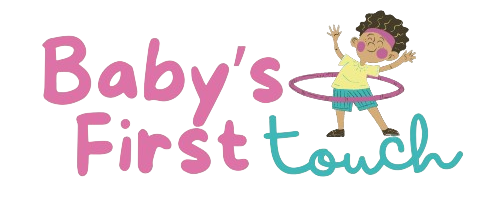Table of Contents
- What Exactly IS a Growth Mindset (And What’s Its Opposite)?
- Why Does Mindset Matter So Much? The Science Speaks
- Recognizing Your Own Mindset: Where Do You Stand?
- Strategies for Cultivating a Growth Mindset: Your Action Plan
- Encouraging a Growth Mindset in Others: Spreading the Power
- The Lifelong Journey of Growth
- Conclusion: Your Mindset, Your Choice, Your Growth
Unlock Your Potential: Building a Growth Mindset for Limitless Learning
Have you ever shied away from a challenge because you feared you weren’t “smart enough”? Or perhaps you’ve admired someone who bounces back from setbacks, seemingly fueled by an unshakeable belief in their ability to improve? The difference often lies not in innate talent, but in something far more powerful and accessible: their mindset.
In a world that constantly demands adaptation and learning, clinging to the idea that our abilities are fixed can be incredibly limiting. But what if you could rewire your brain to embrace challenges, persist through obstacles, and see effort as the path to mastery? That’s the core promise of cultivating a growth mindset, a concept pioneered by renowned Stanford psychologist Carol Dweck. This isn’t just positive thinking; it’s a fundamental shift in perspective that unlocks your capacity for continuous learning and achievement.
This article is your comprehensive guide to understanding and building a robust growth mindset. We’ll delve into the science behind it, explore practical strategies you can implement today, and discuss how to foster this powerful perspective in others. Get ready to transform how you approach learning, challenges, and your own incredible potential.

What Exactly IS a Growth Mindset (And What’s Its Opposite)?
At its heart, mindset refers to the underlying beliefs we hold about our intelligence, talents, and abilities. Dr. Carol Dweck’s research identified two primary mindsets that shape how we navigate life, particularly when it comes to learning and facing difficulties:
The Fixed Mindset: Believing Abilities are Set in Stone
Individuals with a predominantly fixed mindset believe that their basic qualities, like intelligence or talent, are simply fixed traits. They believe you’re either born smart, artistic, or athletic, or you’re not. This leads to certain tendencies:
- Avoiding Challenges: Seen as risks that could expose perceived lack of innate ability.
- Giving Up Easily: Obstacles are viewed as proof of limitation, rather than opportunities to learn.
- Seeing Effort as Fruitless: If you have to try hard, you must not be naturally good at it.
- Ignoring Useful Feedback: Criticism feels personal and threatening to their sense of self-worth.
- Feeling Threatened by Others’ Success: It highlights their own perceived fixed limitations.
The danger of a fixed mindset is that it creates an urgency to prove yourself over and over, while actively discouraging the very process of learning – which often involves struggle and mistakes.
The Growth Mindset: Believing Abilities Can Be Developed
In contrast, individuals with a growth mindset believe that their most basic abilities can be developed through dedication, hard work, and effective strategies. They understand that talent and intelligence are just starting points. This belief fosters:
- Embracing Challenges: Seen as opportunities to stretch, learn, and grow.
- Persisting Through Obstacles: Setbacks are viewed as a natural part of the learning process, motivating increased effort.
- Seeing Effort as the Path to Mastery: Hard work is understood as necessary for developing skills.
- Learning from Criticism: Feedback is welcomed as valuable information for improvement.
- Finding Inspiration in Others’ Success: Successes of others provide lessons and motivation.
A growth mindset creates a passion for learning rather than a hunger for approval. It allows people to thrive during challenging times, seeing them not as roadblocks but as springboards for growth.
Why Does Mindset Matter So Much? The Science Speaks
This isn’t just about feeling good; the mindset you adopt has profound implications for your brain, your motivation, and ultimately, your success and well-being. The exciting news from neuroscience backs this up.
Neuroplasticity: Your Brain Isn’t Fixed Either!
One of the most exciting discoveries in modern neuroscience is neuroplasticity – the brain’s remarkable ability to reorganize itself by forming new neural connections throughout life. Every time you learn something new, practice a skill, or even think differently, you are physically changing your brain.
A growth mindset aligns perfectly with this scientific reality. When you believe you can improve and put in the effort, you engage in activities that literally strengthen neural pathways associated with that skill. You learn more effectively because you’re actively building the brain structures required for mastery. Conversely, a fixed mindset can inadvertently limit this process, as the belief that change isn’t possible reduces the engagement needed for neural growth.

Motivation and Resilience
Mindset directly impacts motivation. If you believe effort leads to improvement (growth mindset), you’re more likely to put in that effort when things get tough. Challenges become interesting puzzles rather than threats to your ego. This fosters resilience – the ability to bounce back from adversity.
Someone with a fixed mindset, however, might interpret difficulty as a sign they’ve hit their limit, leading to decreased motivation and a greater likelihood of giving up. Their self-worth is often tied to performance, making setbacks feel devastating.
Achievement and Lifelong Learning
Unsurprisingly, research consistently shows that individuals with a growth mindset tend to achieve more over time. They actively seek learning opportunities, aren’t afraid to step outside their comfort zone, and persist longer in the face of difficulty. This creates a positive feedback loop: effort leads to learning, which leads to achievement, reinforcing the belief in growth.
In today’s rapidly changing world, the ability and willingness to continuously learn – lifelong learning – is crucial. A growth mindset is the engine that drives this essential skill.
Recognizing Your Own Mindset: Where Do You Stand?
Developing a growth mindset often starts with recognizing where you currently lean. We all have a mix of both mindsets, often varying depending on the situation or domain (e.g., you might have a growth mindset about learning a new hobby but a fixed mindset about public speaking).
Self-Reflection Prompts:
- When faced with a significant challenge, is your first thought “Can I do this?” or “How can I learn to do this?”
- How do you feel when you have to exert a lot of effort? Do you see it as a sign of inadequacy or as part of the process?
- How do you react to constructive feedback or criticism? Do you get defensive, or do you look for the learning opportunity?
- When you encounter a setback or make a mistake, do you tend to dwell on the failure or focus on what you can learn from it?
- How do you feel when peers or colleagues succeed at something you find difficult?
Common Fixed Mindset Traps:
- Thinking: “I’m just not a math person.” (or art, tech, etc.)
- Avoiding tasks where you might look incompetent.
- Feeling envious or discouraged by the success of others.
- Giving up quickly when something feels too hard.
- Believing that talent alone creates success, without effort.
Becoming aware of these thoughts and tendencies is the first crucial step towards shifting towards a more growth-oriented perspective.
Strategies for Cultivating a Growth Mindset: Your Action Plan
The good news is that mindset isn’t fixed! You can actively cultivate a growth mindset through conscious effort and practice. Here are actionable strategies:
1. Embrace Challenges, Don’t Avoid Them
Instead of shying away from difficulty, reframe challenges as opportunities. See them not as tests of your innate ability, but as chances to stretch yourself, learn new skills, and build resilience. Consciously choose tasks that are slightly outside your current comfort zone.
- Action Tip: Identify one small challenge this week you’d normally avoid. Make a plan to tackle it, focusing on the learning process, not just the outcome.
2. Focus on Effort and Process, Not Just Outcome
Shift your focus from solely celebrating the final result (e.g., getting an ‘A’) to acknowledging and valuing the effort, strategies, and learning journey involved. Understand that mastery comes from dedication and hard work.
- Action Tip: When reflecting on a task (successful or not), ask yourself: “What strategies did I use? What did I learn? What could I try differently next time?” Praise your own persistence.
3. Seek and Value Feedback
Actively seek out constructive criticism. View feedback not as a personal judgment, but as valuable data that can help you improve. Learn to separate feedback on your performance or approach from your inherent worth as a person.
- Action Tip: Ask a trusted colleague, mentor, or friend for specific feedback on a recent project or skill you’re developing. Listen openly and thank them for their input.
4. Learn from Mistakes and Setbacks
Mistakes are inevitable; it’s how you respond to them that matters. Reframe errors not as failures, but as crucial learning opportunities. Analyze what went wrong, extract the lesson, and adjust your approach.
- Action Tip: The next time you make a mistake, resist the urge to get discouraged. Instead, ask: “What can I learn from this? How can this help me do better next time?”

5. Develop a Passion for Lifelong Learning
Cultivate curiosity. Focus on the joy of discovery and the satisfaction of acquiring new knowledge or skills. See learning as an ongoing journey, not a destination.
- Action Tip: Dedicate a small amount of time each week purely to learning something new that interests you, without pressure for immediate results. Read an article, watch a tutorial, experiment with a new tool.
6. Harness the Power of “Yet”
This simple linguistic trick, highlighted by Carol Dweck, can be incredibly powerful. When you catch yourself thinking “I can’t do this” or “I don’t understand this,” add the word “yet” to the end. “I can’t do this *yet*.” This small addition implies that ability is temporary and improvement is possible with time and effort.
- Action Tip: Practice consciously adding “yet” to your self-talk whenever you encounter a limitation or struggle.
7. Change Your Self-Talk
Pay attention to the internal monologue in your head. Fixed mindset thoughts often sound like harsh judgments (“I’m so stupid,” “I’ll never get this right”). Challenge these thoughts and replace them with growth-oriented alternatives (“This is harder than I expected, what strategy can I try?” “Mistakes help me learn,” “I can improve with practice”).
- Action Tip: Keep a thought journal for a day. Note down fixed mindset thoughts and actively practice reframing them.
8. Surround Yourself with Growth-Minded People
Mindsets can be contagious. Spend time with people who embrace challenges, value effort, and support your learning journey. Their attitudes and behaviors can inspire and reinforce your own growth mindset.
- Action Tip: Identify people in your life (friends, family, colleagues, mentors) who exemplify a growth mindset. Observe how they handle challenges and setbacks.
Encouraging a Growth Mindset in Others: Spreading the Power
Cultivating your own growth mindset is powerful, but helping others develop one – whether they are your children, students, or team members – can create a ripple effect of positive change and enhanced learning.
Praise Process, Effort, and Strategy – Not Just Innate Talent
This is perhaps the most crucial shift. Instead of saying “You’re so smart!” (which implies fixed talent), praise the specific actions that led to success:
- “You worked really hard on that problem, and you found a great solution!” (Praises effort)
- “I like how you tried different approaches until you figured it out.” (Praises strategy)
- “That was a challenging task, but you stuck with it.” (Praises persistence)
- “You’ve improved so much in [skill] because you’ve been practicing consistently.” (Praises effort leading to improvement)
This type of process praise reinforces the connection between effort and success, nurturing a growth mindset.
Model Growth Mindset Behavior Yourself
Actions speak louder than words. Let others see you embracing challenges, persisting through difficulties, talking about your own learning process (including mistakes), and seeking feedback. Share stories of how you overcame obstacles through effort and strategy.
Create a Safe Environment for Mistakes and Learning
Foster an atmosphere where it’s okay to not know the answer, to try something new, and even to fail. Frame mistakes as learning opportunities. Encourage questions and exploration without fear of judgment. This is vital in classrooms, workplaces, and homes.
Frame Challenges Positively
Present difficult tasks not as insurmountable hurdles, but as exciting opportunities to learn and develop new skills. Use language that emphasizes growth potential, such as “This will stretch our skills” or “Let’s figure out how we can tackle this challenge together.”
Teach About Neuroplasticity and Mindsets
Explicitly teaching others (especially children and students) about how the brain grows stronger with effort (neuroplasticity) and the difference between fixed and growth mindsets can be incredibly empowering. Understanding the science makes the concept tangible and believable.

The Lifelong Journey of Growth
Building and maintaining a growth mindset isn’t a one-time event; it’s an ongoing practice. There will be times when fixed mindset thoughts creep back in, especially when you’re stressed, tired, or facing significant setbacks. That’s normal.
The key is awareness – recognizing those fixed mindset triggers and consciously choosing to respond with a growth-oriented perspective. It requires ongoing self-reflection, deliberate practice of the strategies outlined above, and a commitment to viewing your life as a continuous opportunity for learning and development.
Embrace the journey. Celebrate the small wins. Be patient with yourself. The effort you invest in cultivating a growth mindset is one of the most powerful investments you can make in your future success, happiness, and overall well-being.
Conclusion: Your Mindset, Your Choice, Your Growth
The way you perceive your abilities profoundly shapes your reality. A fixed mindset can trap you, limiting your potential and making you fear failure. But by embracing a growth mindset, you unlock the door to continuous improvement, greater resilience, and a more fulfilling relationship with learning and challenges.
Remember these key takeaways:
- Your brain is malleable (neuroplasticity), and abilities can be developed through dedication and effort.
- Challenges are opportunities, not threats.
- Effort is the path to mastery.
- Feedback and mistakes are invaluable tools for learning.
- You can consciously cultivate a growth mindset through specific strategies like focusing on process, using “yet,” and changing your self-talk.
- Fostering a growth mindset in others involves praising process, modeling behavior, and creating safe learning environments.
Building a growth mindset is a journey, not a destination. Start today. Pick one strategy that resonates with you and begin practicing it. By consciously choosing growth, you empower yourself to learn, adapt, and thrive in an ever-changing world. Your potential is not predetermined; it’s waiting to be cultivated.



